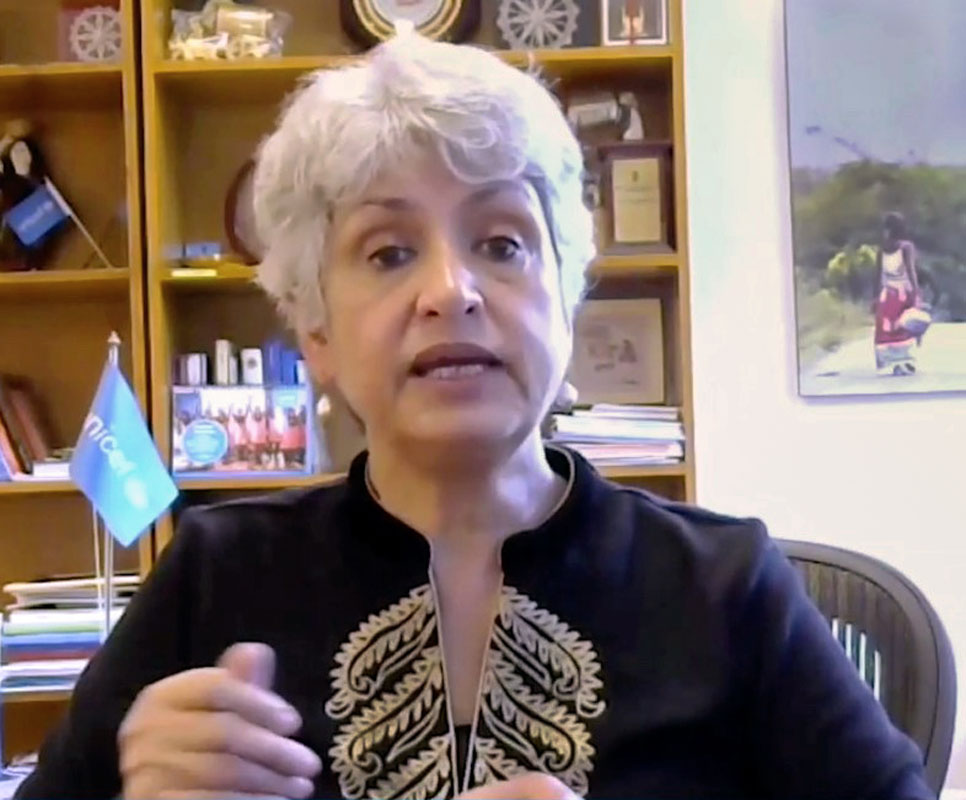
Covid-19 has inflicted all kinds of horrors on our world. But one of the most horrendous blows this tiny virus will inflict on us is the terrifying prospect of a world where “11 million girls may not return to school this year due to the unprecedented disruption in schooling,” said Yasmin Ali Haque, UNICEF, country head, India, addressing Rotary zone Institute The Odyssey. This estimate was made by UNESCO.
Speaking on ‘Girl child education — the only solution’, she said the education of girls goes “beyond getting girls into schools. It is also about creating an environment where girls learn and feel safe. An environment that provides an opportunity to access and complete education and at the same time inculcate the socio-economic and life skills necessary to navigate and adapt to a changing world.” It is also about enabling girls/young women to make decisions about their own life and to contribute to communities and the wider world.
Stressing the need to ensure that every girl, and boy as well, gets quality education, she said, “this is even more critical in a world ravaged by Covid. Even before the Covid pandemic, 30 million children were out of schools in India, of whom 40 per cent are estimated to be adolescent girls.”
With lower access to technology, digital schooling will further disengage girls from education and widen education inequality and existing learning barriers, and increase the gender gap in education.
Also, Yasmin added, median data indicates that the years a girl spends in school is only 4.4 compared to seven years for boys. “This indicates the threat to decades of work in gender equality and also puts girls around the world to the risk of adolescent pregnancy, early and forced marriage and violence.”
India, as we all know, has one of the largest shares of child brides and this is predicted to rise because of the pandemic. “Childline India (Foundation) has reported a 17 per cent increase in distress calls related to early marriage of girls in June and July 2020. This, compared to 2019. For many girls, school is more than a key to a better future. It is a lifeline, although a fragile one.”
Digital gender divide
Another concern UNICEF’s India head raised pertains to the disturbing “digital gender divide” which this pandemic had unveiled. “The move to remote learning during the pandemic puts more barriers in the learning for girls. There exists a huge gender gap in the use of mobile phones in India, where only 21 per cent of women are mobile phone users compared to 42 per cent men.”
With a lower access to technology, digital schooling will further disengage girls from education and further widen education inequality and existing learning barriers, and increase the gender gap in education. “Girls will be discriminated much more than boys in access to technology, and will be burdened with even more household chores and early marriage. Girls from marginalised groups face even more discrimination in their access to education.” There was evidence that girls who receive education are less likely to marry young, contribute to the economy and communities and share livelihood responsibilities with men, she added.
Thriving and resilient societies can only become a reality where both the genders get equal opportunities to fulfil their potential. Education remains a key in preparing children to face this challenging world.
For many girls, school is more than a key to a better future. It is a lifeline, although a fragile one.
She added that as schools closed in March 2020 due to the pandemic, UNICEF provided financial and technical support at national and state levels to strengthen capacity for the continuity of learning and to plan for the reopening of schools. “This has resulted in 59 million children, 49 per cent being girls, across 17 states to access remote learning opportunities which are no-tech, low-tech and also high-tech.” UNICEF is also working to support teacher education.
Apart from a life skills measurement tool that has been rolled out for five states, a career guidance portal has also been launched by several state governments, enabling more than 17 million girls and boys to access higher education, scholarships, skill development programmes, internship and apprenticeship opportunities.
In conclusion, Yasmin said that sustained effort is required to ensure that girls continue to be engaged in learning when schools remain closed, by providing them access to technology. We also have to ensure that girls are given the opportunity to learn “at their convenience”.
While advocating a reduction in the school fees for girls, she said that “all plans to reopen schools should be gender responsive and ensure a safe and supportive environment for girls to return to schools. We should educate both teachers and parents to end discrimination and early marriage of girls.”





